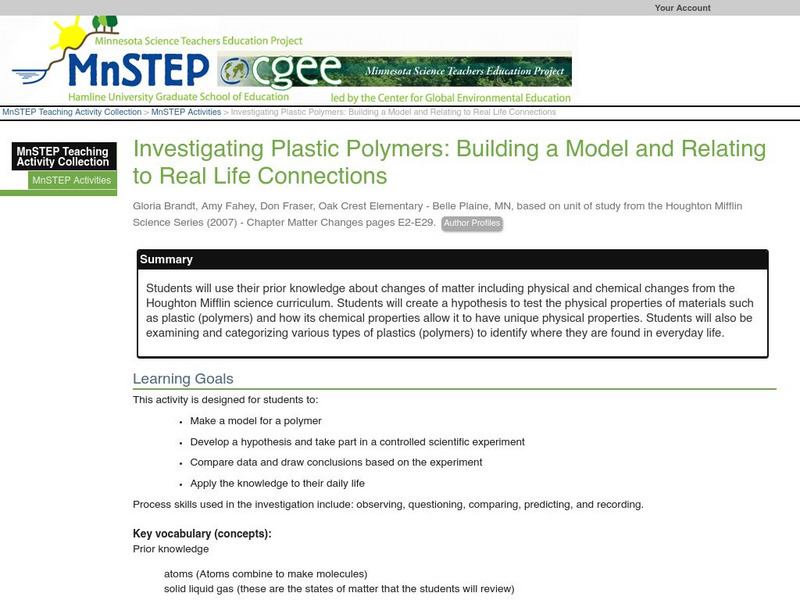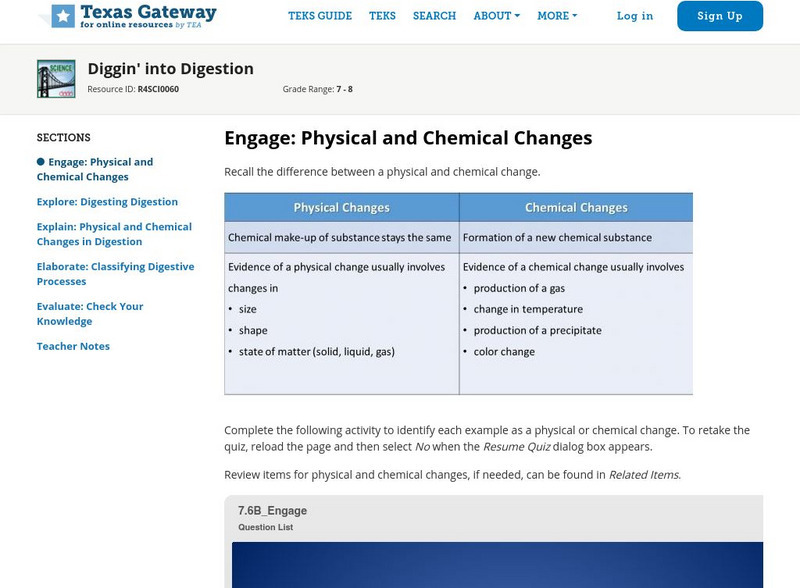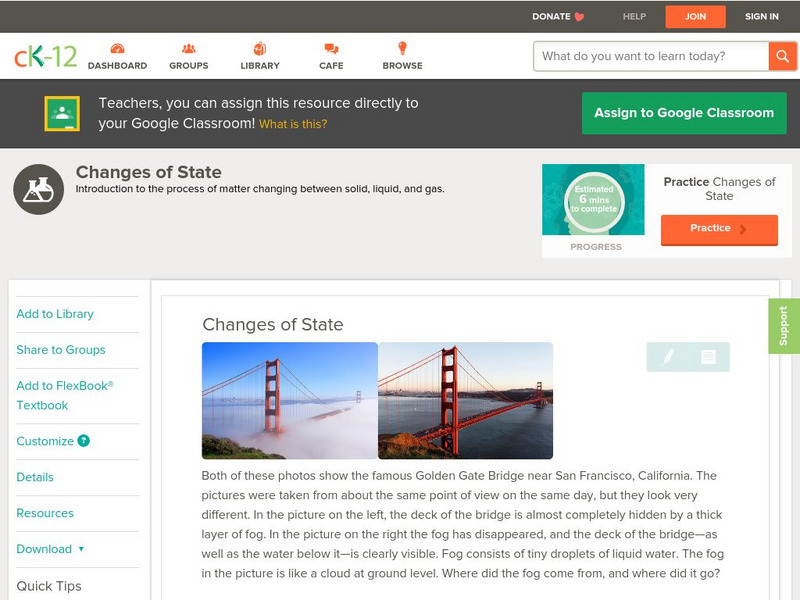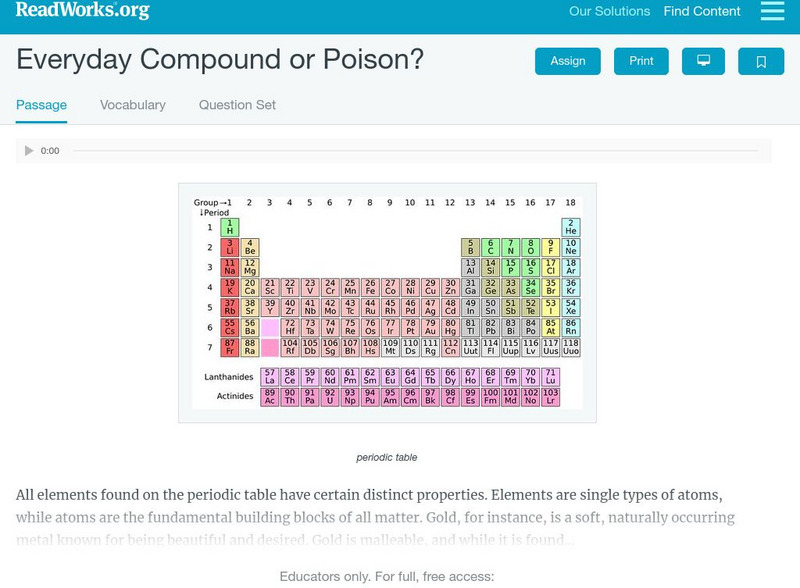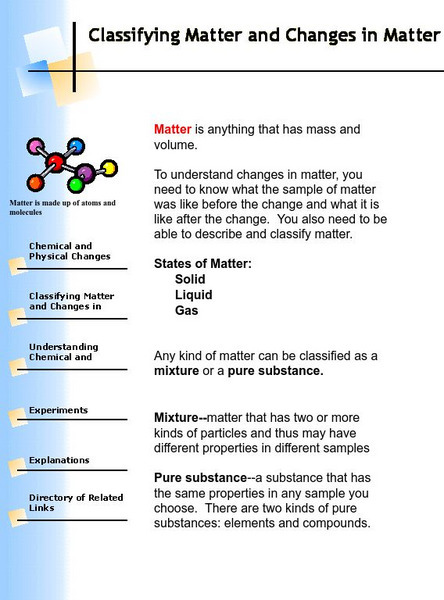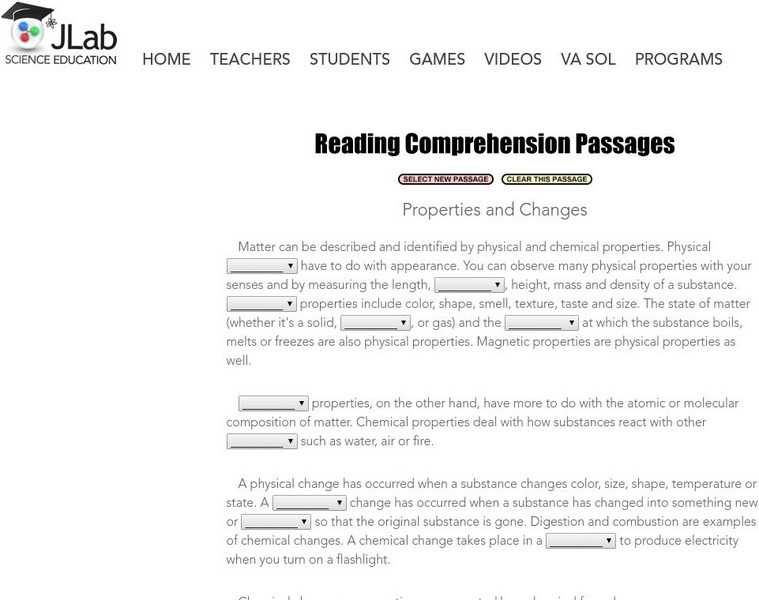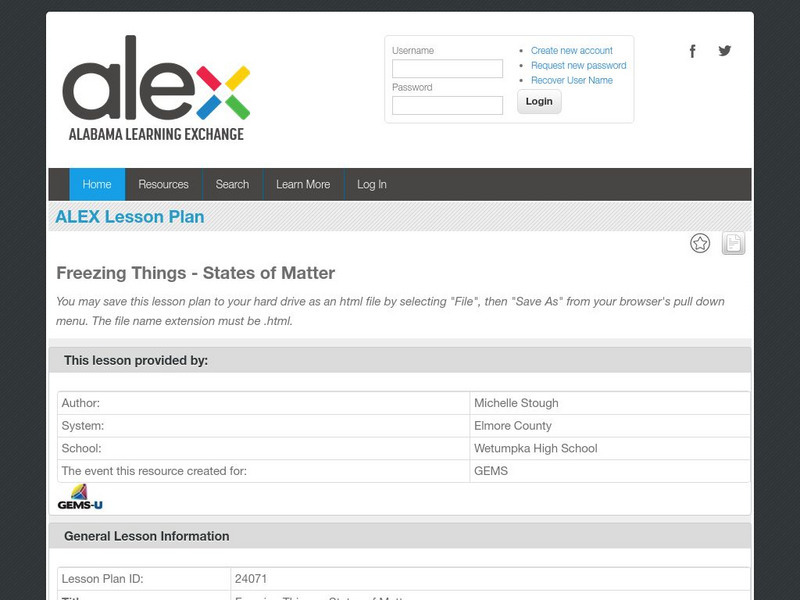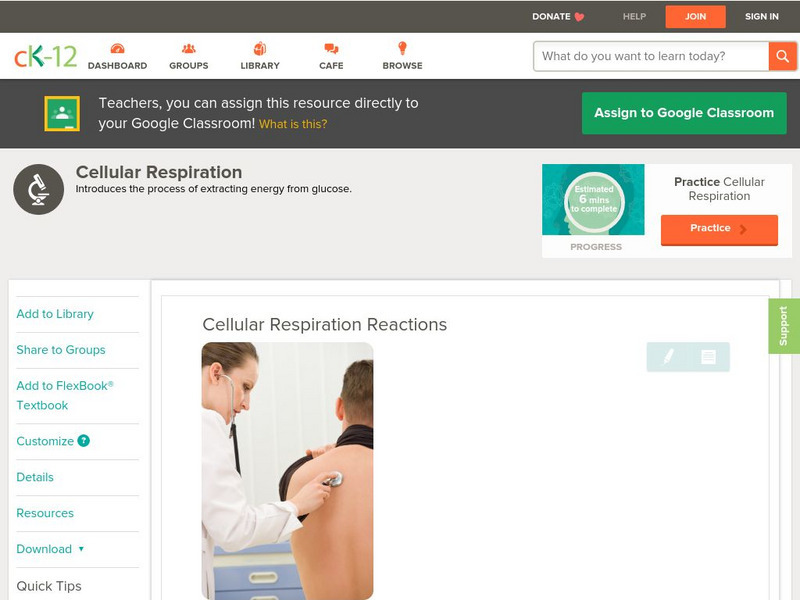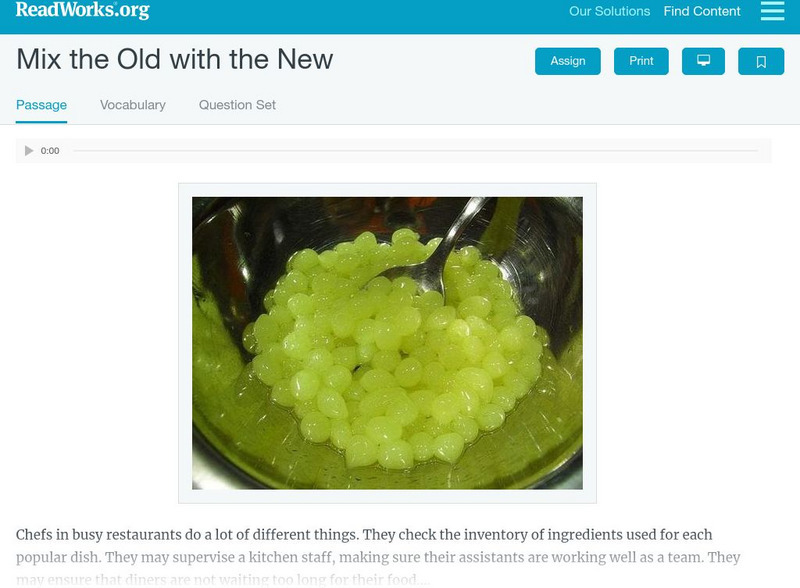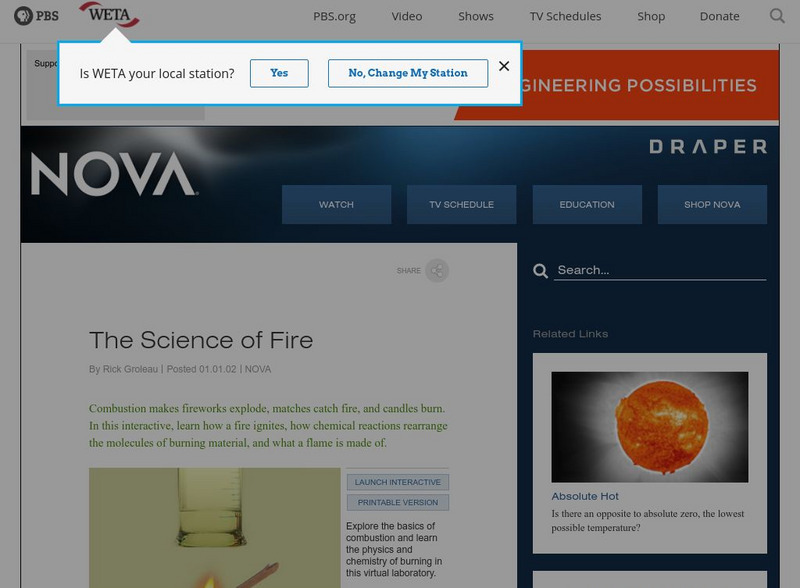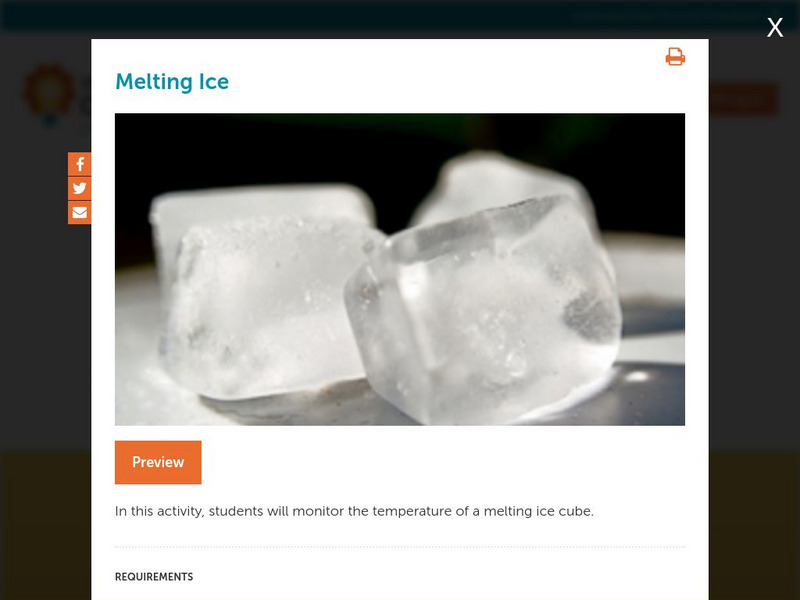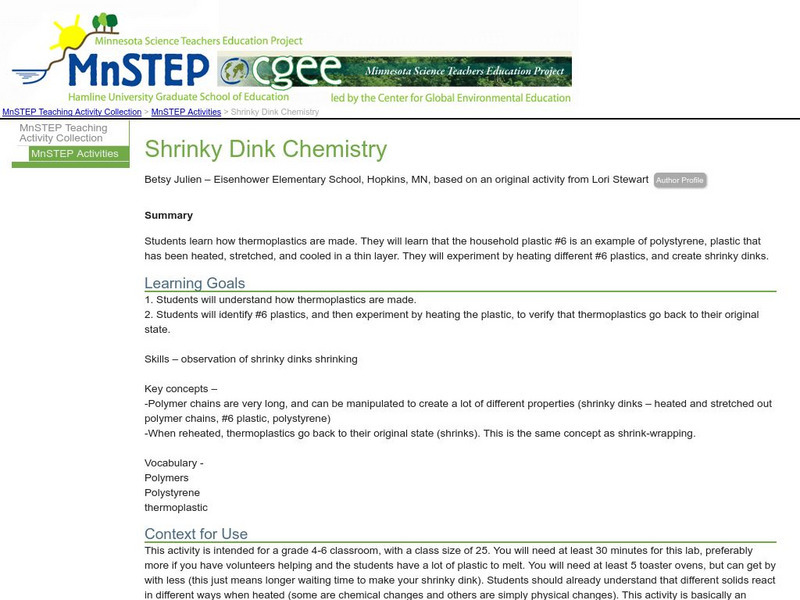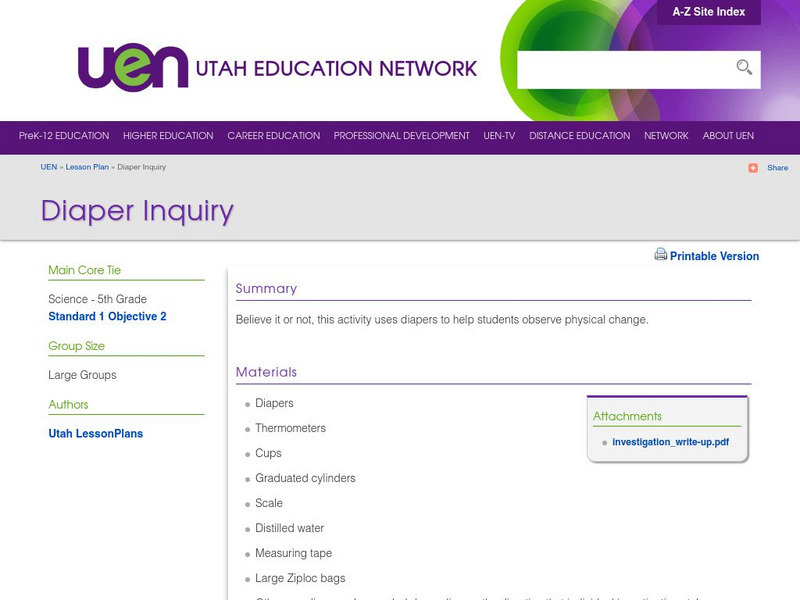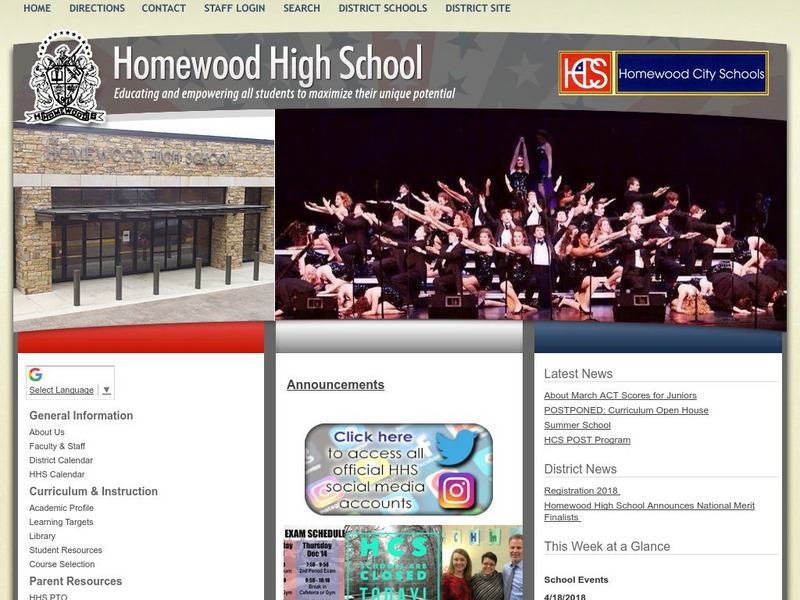Annenberg Foundation
Annenberg Learner: 5 Question Survey: Chemical Change
Find out your or your students' basic knowledge of concepts like matter, molecules and open and closed systems. Afterwards you can see how others answered the questions.
Science Education Resource Center at Carleton College
Serc: Investigating Plastic Polymers: Building a Model
Young scholars will use their prior knowledge about changes of matter including physical and chemical changes from the Houghton Mifflin science curriculum. Students will create a hypothesis to test the physical properties of materials...
Texas Education Agency
Texas Gateway: Diggin' Into Digestion
In this lesson, students learn about physical and chemical changes during digestion through a variety of activities.
Other
The Science House: Dancing Spaghetti
The chemical change of matter is illustrated in this lab experiment when spaghetti is placed in a solution of baking soda and vinegar. Watch the spaghetti rise to the surface and sink again once the gas is released.
CK-12 Foundation
Ck 12: Physical Science: Changes of State
[Free Registration/Login may be required to access all resource tools.] Definition of a change of state and the physical processes that cause it.
Concord Consortium
Concord Consortium: Stem Resources: Baggie Chemistry
Observe chemical and physical changes with this lab using everyday household items. Lab includes procedure and online data collection tool where answers can be saved and graded by teacher.
Science Education Resource Center at Carleton College
Serc: Combustion or Oxidation
Young scholars burn a magnesium strip to reinforce the concepts of chemical vs. physical changes, reaction types, conservation of mass, formulas and equations, stoichiometry, Lewis structures, and to explore the concept of...
Read Works
Read Works: Everyday Compound or Poison?
[Free Registration/Login Required] An informational text about how chemicals can be combined to form safe or unsafe compounds. A question sheet is available to help students build skills in reading comprehension.
Other
Classifying Matter and Changes in Matter
Learn to identify changes in matter and explain what happens as matter changes. The lesson is supplemented with several experiments to reinforce key concepts.
ClassFlow
Class Flow: Reversible and Irreversible Change
[Free Registration/Login Required] This unit brings together and consolidates work that children have done before on reversible changes and introduces irreversible changes. Students are guided through experiments illustrating the...
ClassFlow
Class Flow: Changing States
[Free Registration/Login Required] Through this unit children consolidate their ideas about changes of state which can be reversed. They use their understanding to explain a range of familiar phenomena.
Thomas Jefferson National Accelerator Facility
Jefferson Lab: Reading Passage: Properties and Changes
Read and fill in the blanks of this passage properties and changes. Each blank has a dropdown menu with choices. When you finish, click CHECK MY ANSWERS. If you pick a wrong answer, the right answer will be displayed along with your choice.
Alabama Learning Exchange
Alex: Freezing Things: States of Matter
The class will go back over the Power Point presentation on chemical and physical properties. The teacher will then conduct numerous liquid nitrogen demos. This lesson is used early in the Chemistry course. The learners love it. This...
CK-12 Foundation
Ck 12: Physical Science: Cellular Respiration Reactions
[Free Registration/Login may be required to access all resource tools.] Definition of cellular respiration and its overall chemical equation. The energy changes that occur during cellular respiration, including in photosynthesis.
Read Works
Read Works: Mix the Old With the New
[Free Registration/Login Required] An informational text about how cooking causes changes in matter. A question sheet is available to help students build skills in reading comprehension.
Science Education Resource Center at Carleton College
Serc: Polymers & Plastics: Classification & Models
Students will use their prior knowledge about changes of matter including physical and chemical changes to examine and categorize various types of plastics (polymers). They will identify how their chemical properties allow them to have...
PBS
Pbs: The Science of Fire
A virtual experiment bringing you to the center of combustion! Understand how fire ignites, what makes a flame, and how molecules rearrange themselves in chemical reactions. This interactive activity gives students four different...
Science Education Resource Center at Carleton College
Serc: Does Salt & Vinegar Have an Effect on Pennies?
During this lab students will experiment to see whether a salt and vinegar solution can clean a tarnished penny. Included on site is lesson plan and student worksheet.
Concord Consortium
Concord Consortium: Stem Resources: Melting Ice
Using temperature probes, students will monitor the temperature of melting ice cubes in different situations. This lab activity, allows students to view the procedure and answer questions online that can be saved and evaluated by the...
Scholastic
Scholastic: Dirtmeister's Science Lab: Matter
Step into Dirtmeister's Science Lab as he explores the challenge question: "How can you force a physical change in matter?" Learn about matter, make your predictions and then do the experiment.
Science Education Resource Center at Carleton College
Serc: Mn Step: Shrinky Dink Chemistry
In this lesson, students first learn about thermoplastics, and about polystyrene in particular, which is a #6 plastic. They will then heat different #6 plastics to create shrinky dinks. As they are heated, they shrink, which is a...
Utah Education Network
Uen: Diaper Inquiry
Students investigate the technology of a diaper. They consider various physical traits of a diaper and then come up with an investigation to test some of these traits.
Other
Educational Innovations: Diaper Polymer Activities [Pdf]
What can you do with diaper polymer? Check out these six quick student experiments involving the chemical used in diapers.
Other
Homewood City Schools: Classification of Matter
This Homewood City Schools site has an outline form and contains lots of information about the classification and composition of matter. Some of the topics covered are matter and temperature, changes in state, composition of matter, and...



